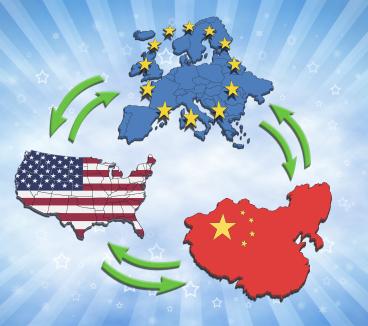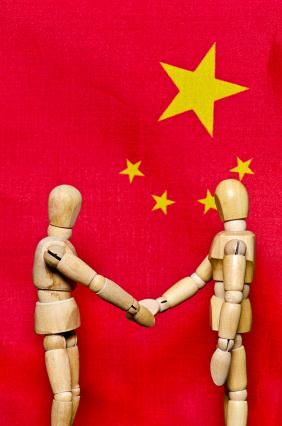
China’s meteoric growth of the last three decades has shaken the world. But recent signs of cooling off has been worrying markets that the world’s second biggest economic engine is running out of steam. China’s economic expansion in 2012 of 7.8 percent year on year was the slowest since 1999, down from 9.3 percent in 2011 and 10.4 percent in 2010.
The dramatic decline in the working age population last year by 3.45 million also started to frighten global multinational companies that even the available work force was shrinking irrevocably.

Those packing up and setting their sights on cheaper manufacturing locations could be missing growth opportunities. “It’s not just about understanding how to take advantage of low-cost labour, it is about taking advantage of the whole ecosystem in these markets,” he added.
It’s an ecosystem in which “small” is a big deal: in this part of the world, innovation at the grass roots level is just as important as creating the next Microsoft. Firms such as BYD, a Chinese car and battery maker, have conducted what Chattopadhyay and others call “frugal innovations” by creating smaller, less capital intensive and less labour intensive processes to make products. When BYD entered the Lithium-ion battery market, it found itself up against global competitors using big manufacturing lines in "clean rooms" to make their batteries. This was too expensive for BYD to break into. Instead, BYD innovated by building the world's first "clean box", which employees could insert their hands into through rubber gloves to build batteries. This meant the clean boxes could easily be scaled up or allocated in different configurations to meet production requirements, maximising efficiency, productivity, and value. From a start up in 1995, this propelled BYD to the world's single biggest maker of mobile phone batteries today.
He also points to medical diagnostic company, Mindray, which makes devices for patient monitoring. Mindray competes with the likes of GE and Toshiba. “They innovated by standardising the use of components across devices and substituting software for hardware. They thought differently about how to build a quality patient monitoring product while keeping costs low and are able to control the variable cost of their product more tightly than the incumbents.”
Taking on Foreign Brands
Chinese companies are also thinking differently about how to take on foreign brands on their territory. Ebohr, a Chinese watch maker founded in 1991, has in the last five years gone from being a producer of inexpensive watches to a provider of high-quality, foreign-made luxury products and one of the most valuable brands in China.
Ebohr started as a processing and assembly factory making watches on order from European and U.S. companies. It started collaborating with companies like Swarovski, to enhance the aesthetic appeal of its watches, then it started a company in Switzerland, hiring executives from local watch companies and launched a Swiss-manufactured range of watches. This, in effect, enabled the company to compete against its foreign competitors in China: importing valuable, foreign-made, branded products, highly regarded by increasingly wealthy and fashion-conscious Chinese consumers.
“It’s a business innovation, they might not be coming up with the next movement in the watch business but they’ve thought of ways they can climb the higher value branded position by making strategic decisions and that’s what it’s about,” Chattopadhyay said.
Chattopadhyay thinks foreign companies are struggling to realise the opportunities this presents. Even hiring local executives and localising products is no guarantee of success. Corporate culture is what needs to change and it doesn’t change overnight, he argues. But there are many ways foreign brands can still take advantage of this innovative and experimental ecosystem and grow successfully. A burgeoning consumer market still awaits.

For companies entering new markets, Szulanski says, “You need to come in the way you are, with what you know, because these are your lenses to discover what's different.” Szulanski calls this “replication” of identifiable trademarks, as some of the original practices may be relevant for the local market. Replicating initially can help identify areas that need to be changed and preserve those that don’t.
Take KFC – the most popular Western fast-food chain in China. It’s hard to walk three blocks in Beijing without coming across “The Colonel”. But contrary to popular perception this popularity and success blossomed only after ten years of painstaking replication. Only after opening a test kitchen in 1998, 11 years after opening its first store, its local food R&D team started experimenting with local dishes; then large-scale menu localisation was implemented to cater to Chinese tastes. This propelled KFC’s growth ahead of McDonald’s, with the company adding 350-400 new stores a year, versus McDonald’s opening 100-150 per year. KFC also opened a distribution centre in China, while McDonald’s restricted itself to its global suppliers and distribution.
Szulanski says McDonald’s has been more conservative, which is evident in the 3,000 outlet lead KFC has on McDonald’s in China. McDonald’s has also experienced strong growth, but its resolve to replicate and stick to its core offerings and identity has limited it. Szulanski says that only about 20 percent of the McDonald’s menu is localised, where the majority of the menu items at KFC are localised and many new products are introduced each year.
“It’s about striking a balance. McDonald’s didn’t take any chances on the ecosystem. It’s a question of having an ecosystem strategy. Do I want to insist on a totally global ecosystem where my standards are completely replicated or would I be willing to take some risks in the local ecosystem, local suppliers in the case of KFC, to allow me to venture into places where I couldn’t go before, such as the second and third tier cities?”
Chattopadhyay concurs that there is yet more domestic demand coming for those willing to adapt to the changing dynamics of second and third tier cities. “There is a market within China to sustain businesses and a lot of the local companies have actually established themselves by competing in these interior markets and sidestepping the multinational competitors. Now they’re in a position to take on foreign competitors in the coastal belt.”
Amitava Chattopadhyay is The INSEAD Chaired Professor of Marketing and Innovation and co-author of The New Emerging Market Multinationals: Four Strategies for Disrupting Markets and Building Brands.
Gabriel Szulanski is Professor of Strategy at INSEAD.
Follow us on twitter @INSEADKnowledge or Facebook https://www.facebook.com/Knowledge.insead.
-
View Comments
-
Leave a Comment




No comments yet.